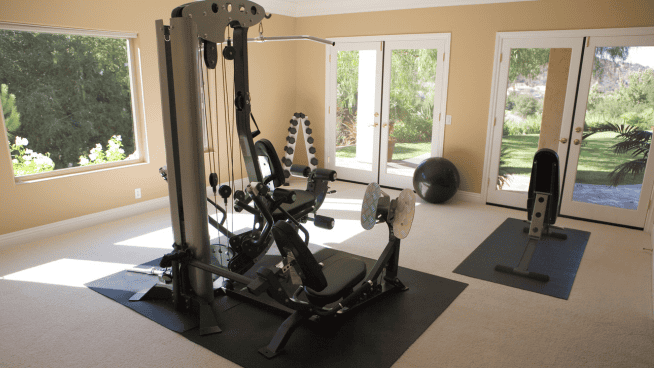3 Tips for Managing Youth Athlete Nutrition
Athletes of all ages have different nutritional needs. When working with athletes, there are three specific things to address when providing effective and practical nutrition advice.
- Physical maturation
- Mental interpretation of nutritional info
- Social considerations
In a presentation by my colleague Heather Mangieri, MS, RD, CSSD, LDN, at the recent Sports, Cardiovascular, and Wellness Conference in Charlotte, she addressed these three factors to help dietitians provide nutritional advice to athletes that actually works:
Physical Maturation
Measurement of skeletal age is the most useful estimate of maturity status, but not always practical. From a research perspective, a better tool is to use this in conjunction with current body height and parental height to predict adult height. Secondary sex characteristics are useful to assess only the current Tanner stage of development, but not the age of onset of puberty or how long the stages will last
Approximately 50% of adult body weight is gained during the adolescent years, and the approximate age of skeletal onset is age 11 for females and age 13 for males. For females, a growth spurt normally occurs at Tanner stage 3 and it does not reach the same degree as males, who reach Tanner Stage 4.
From a body composition perspective, males and females have similar fat-free mass from ages 5-10, with similar amounts at age 5, but a difference of 6% by age 10. For pubertal females, there is an increase of both body fat and fat mass of 1.14 kg per year, and a slight reduction in lean mass, while body fat percentage can increase from 16%-27% and can reach fat-free mass by age 15-16 years of age.
For pubertal males, there is a reduction of body fat percentage by 1.15kg per year while lean mass continues to increase, and can reach young adult fat-free mass by age 19-20 years of age. In adults, it is estimated that males have 150% of the lean body mass of the average female and twice the number of muscle cells.
Another factor to consider when working with teen athletes is physiological growth and development. From a physical perspective, looking at changes in secondary sex characteristics, such as height, bone density, and additions and reduction of lean mass and fat mass, as well as body fat percentages.
Other changes happen under the influence of the increased secretion of Growth hormone and Gonadal Steroid Hormone, including Estradiol and Progesterone (female) and Testosterone (male), with both androgens and estrogen promoting the deposition of bone density. More than 90% of peak skeletal muscle is present by age 18 in adolescents, who have undergone normal pubertal development at the usual time. With the increase in muscle mass, comes an increase in strength.
There are some challenges that are specific to the teen athlete. There are challenges that can be controlled and those that are not under control. Those that are not controlled include male late maturation and genetics as well as short stature, difficulty gaining weight or being overweight, or female early maturation or late maturation. Those factors under control include fat gain mass in both males and females and performance issues due to poor diet (poor bone density and fatigue.)
The Teenage Athlete Brain
The brain of a teenager can be divided into three phases: early adolescence (ages 11-14), middle adolescence (ages 15-17), and later adolescence (ages 18-21). There are emotional, cognitive, and social issues that need to be considered. In early adolescence, there is a feeling of being judged, with concrete thinking (everything is black or white), and very impulsive, with a need to fit in.
In middle adolescence, there is more self-awareness, a move toward more abstract thinking, and more risk-taking as well as the need to be popular. In later adolescence: there is more empathy, even more abstract thinking, and more social and cultural traditions as well as less importance on what others think.
Social Considerations
Teen athletes are pulled in many directions. Their body and mind, as mentioned earlier, are developing at rapid rates, as well as home, school, and training obligations. Some athletes also have part-time jobs, which also limit the time they have to get things done during their very full days. Issues for some athletes include breakfast (or lack thereof), school/lunch schedules, homework, training/practice/competition, travel, social time, sleep (or lack thereof) as well as family obligations or monetary concerns.
All of these factors should be recognized and discussed with athletes and their families to find a solution that they can achieve together. Breakfast can be some dry cereal, nuts, and a hard-boiled egg, or some low-fat milk or juice, fresh fruit, or peanut butter toast. One of my favorite questions for my athletes is what would happen if there was no gas in their cars? They usually tell me, “It won’t run.” So I explain to them if there is no fuel in their body, they won’t run well either.
If athletes have an early or late lunch at school, they need to make accommodations as well. They should pack extra food for fuel, add an extra slice of bread to a sandwich, or bring or buy 2 lunches. For lack of time due to work or homework, build in mini-meals to help fuel their body. Examples include a yogurt parfait with berries, granola and low-fat yogurt, peanut butter crackers, or homemade trail mix that travels well, too. (The gas in the car analogy works well here, too). For travel, make sure to bring items to snack on that do not need refrigeration, such as dried fruit, nuts, dry cereal, whole grain tortilla chips, or a peanut butter and jelly sandwich.
For lack of sleep (which happens a LOT with my teen athletes), work with athletes on time management skills to get more work done during the day, limit screen time (a huge time zapper) as well as trying to go to bed 15 minutes earlier to get more rest. Explain to athletes that their muscles and mind need time to rest, repair and rejuvenate as well.
For athletes that struggle with methods to eat healthy on a budget, offer suggestions to stretch their food dollar, such as eggs (an inexpensive and great protein source), frozen vegetables, shopping in bulk for items such as brown rice, dried beans, and whole grain pasta. Other suggestions are to limit the processed foods (soda, chips, cheese snacks, and candy) to purchase more nutrient-dense foods that will “allow the car to run better and longer”
Working with teen athletes can make a truly positive impact on their physical, psychological, and social development. Sports dietitians need to work with teens and their families to offer a supportive, non-judgmental environment with solutions to allow them to perform at their best on and off the field.
RECOMMENDED FOR YOU
3 Tips for Managing Youth Athlete Nutrition
Athletes of all ages have different nutritional needs. When working with athletes, there are three specific things to address when providing effective and practical nutrition advice.
- Physical maturation
- Mental interpretation of nutritional info
- Social considerations
In a presentation by my colleague Heather Mangieri, MS, RD, CSSD, LDN, at the recent Sports, Cardiovascular, and Wellness Conference in Charlotte, she addressed these three factors to help dietitians provide nutritional advice to athletes that actually works:
Physical Maturation
Measurement of skeletal age is the most useful estimate of maturity status, but not always practical. From a research perspective, a better tool is to use this in conjunction with current body height and parental height to predict adult height. Secondary sex characteristics are useful to assess only the current Tanner stage of development, but not the age of onset of puberty or how long the stages will last
Approximately 50% of adult body weight is gained during the adolescent years, and the approximate age of skeletal onset is age 11 for females and age 13 for males. For females, a growth spurt normally occurs at Tanner stage 3 and it does not reach the same degree as males, who reach Tanner Stage 4.
From a body composition perspective, males and females have similar fat-free mass from ages 5-10, with similar amounts at age 5, but a difference of 6% by age 10. For pubertal females, there is an increase of both body fat and fat mass of 1.14 kg per year, and a slight reduction in lean mass, while body fat percentage can increase from 16%-27% and can reach fat-free mass by age 15-16 years of age.
For pubertal males, there is a reduction of body fat percentage by 1.15kg per year while lean mass continues to increase, and can reach young adult fat-free mass by age 19-20 years of age. In adults, it is estimated that males have 150% of the lean body mass of the average female and twice the number of muscle cells.
Another factor to consider when working with teen athletes is physiological growth and development. From a physical perspective, looking at changes in secondary sex characteristics, such as height, bone density, and additions and reduction of lean mass and fat mass, as well as body fat percentages.
Other changes happen under the influence of the increased secretion of Growth hormone and Gonadal Steroid Hormone, including Estradiol and Progesterone (female) and Testosterone (male), with both androgens and estrogen promoting the deposition of bone density. More than 90% of peak skeletal muscle is present by age 18 in adolescents, who have undergone normal pubertal development at the usual time. With the increase in muscle mass, comes an increase in strength.
There are some challenges that are specific to the teen athlete. There are challenges that can be controlled and those that are not under control. Those that are not controlled include male late maturation and genetics as well as short stature, difficulty gaining weight or being overweight, or female early maturation or late maturation. Those factors under control include fat gain mass in both males and females and performance issues due to poor diet (poor bone density and fatigue.)
The Teenage Athlete Brain
The brain of a teenager can be divided into three phases: early adolescence (ages 11-14), middle adolescence (ages 15-17), and later adolescence (ages 18-21). There are emotional, cognitive, and social issues that need to be considered. In early adolescence, there is a feeling of being judged, with concrete thinking (everything is black or white), and very impulsive, with a need to fit in.
In middle adolescence, there is more self-awareness, a move toward more abstract thinking, and more risk-taking as well as the need to be popular. In later adolescence: there is more empathy, even more abstract thinking, and more social and cultural traditions as well as less importance on what others think.
Social Considerations
Teen athletes are pulled in many directions. Their body and mind, as mentioned earlier, are developing at rapid rates, as well as home, school, and training obligations. Some athletes also have part-time jobs, which also limit the time they have to get things done during their very full days. Issues for some athletes include breakfast (or lack thereof), school/lunch schedules, homework, training/practice/competition, travel, social time, sleep (or lack thereof) as well as family obligations or monetary concerns.
All of these factors should be recognized and discussed with athletes and their families to find a solution that they can achieve together. Breakfast can be some dry cereal, nuts, and a hard-boiled egg, or some low-fat milk or juice, fresh fruit, or peanut butter toast. One of my favorite questions for my athletes is what would happen if there was no gas in their cars? They usually tell me, “It won’t run.” So I explain to them if there is no fuel in their body, they won’t run well either.
If athletes have an early or late lunch at school, they need to make accommodations as well. They should pack extra food for fuel, add an extra slice of bread to a sandwich, or bring or buy 2 lunches. For lack of time due to work or homework, build in mini-meals to help fuel their body. Examples include a yogurt parfait with berries, granola and low-fat yogurt, peanut butter crackers, or homemade trail mix that travels well, too. (The gas in the car analogy works well here, too). For travel, make sure to bring items to snack on that do not need refrigeration, such as dried fruit, nuts, dry cereal, whole grain tortilla chips, or a peanut butter and jelly sandwich.
For lack of sleep (which happens a LOT with my teen athletes), work with athletes on time management skills to get more work done during the day, limit screen time (a huge time zapper) as well as trying to go to bed 15 minutes earlier to get more rest. Explain to athletes that their muscles and mind need time to rest, repair and rejuvenate as well.
For athletes that struggle with methods to eat healthy on a budget, offer suggestions to stretch their food dollar, such as eggs (an inexpensive and great protein source), frozen vegetables, shopping in bulk for items such as brown rice, dried beans, and whole grain pasta. Other suggestions are to limit the processed foods (soda, chips, cheese snacks, and candy) to purchase more nutrient-dense foods that will “allow the car to run better and longer”
Working with teen athletes can make a truly positive impact on their physical, psychological, and social development. Sports dietitians need to work with teens and their families to offer a supportive, non-judgmental environment with solutions to allow them to perform at their best on and off the field.










